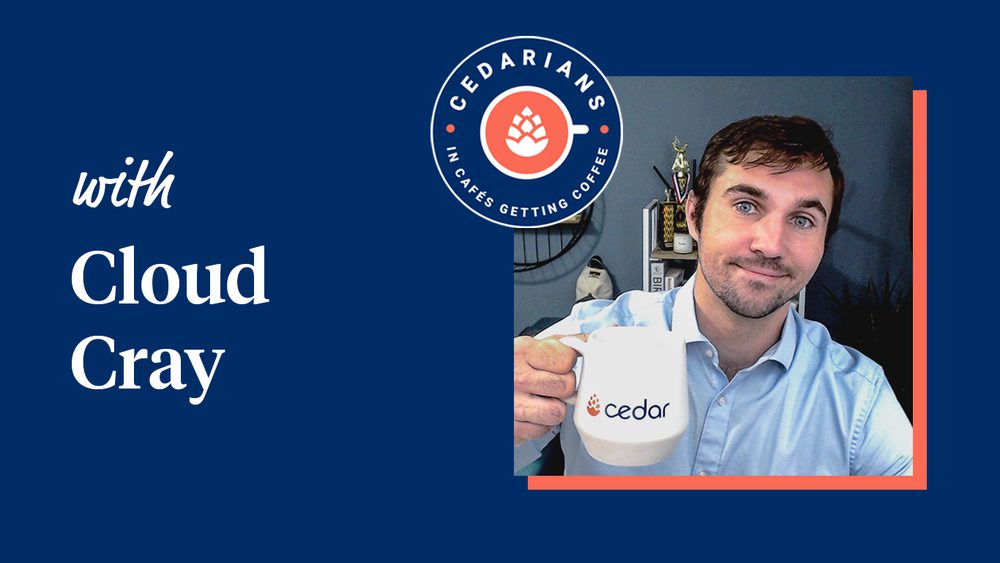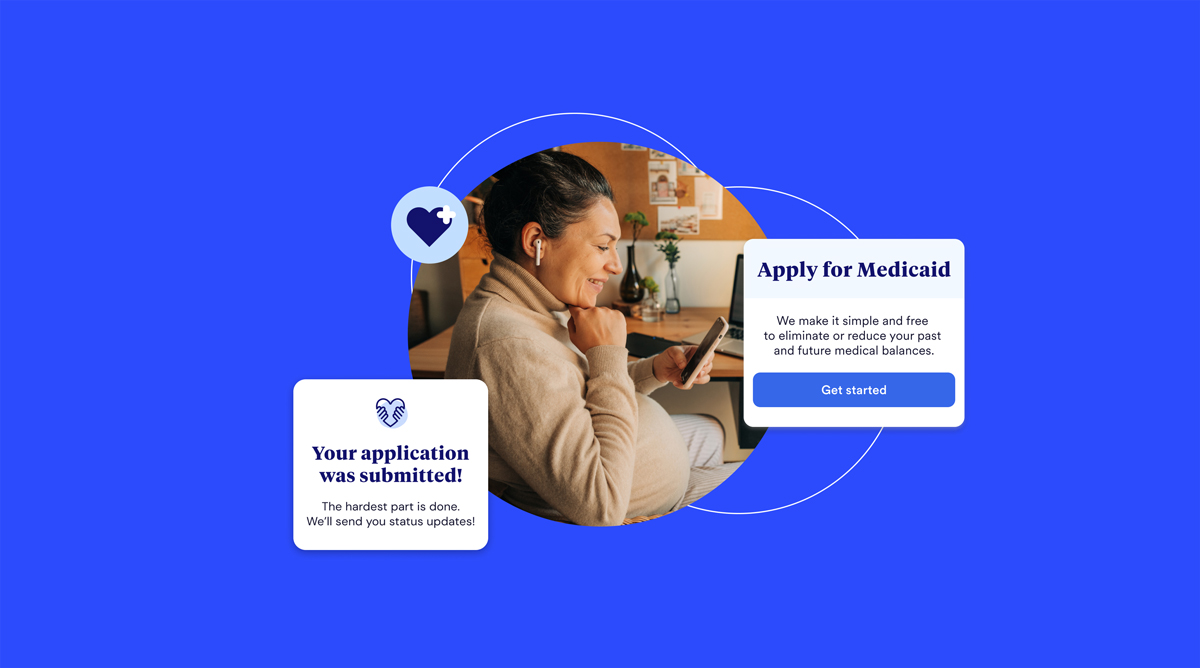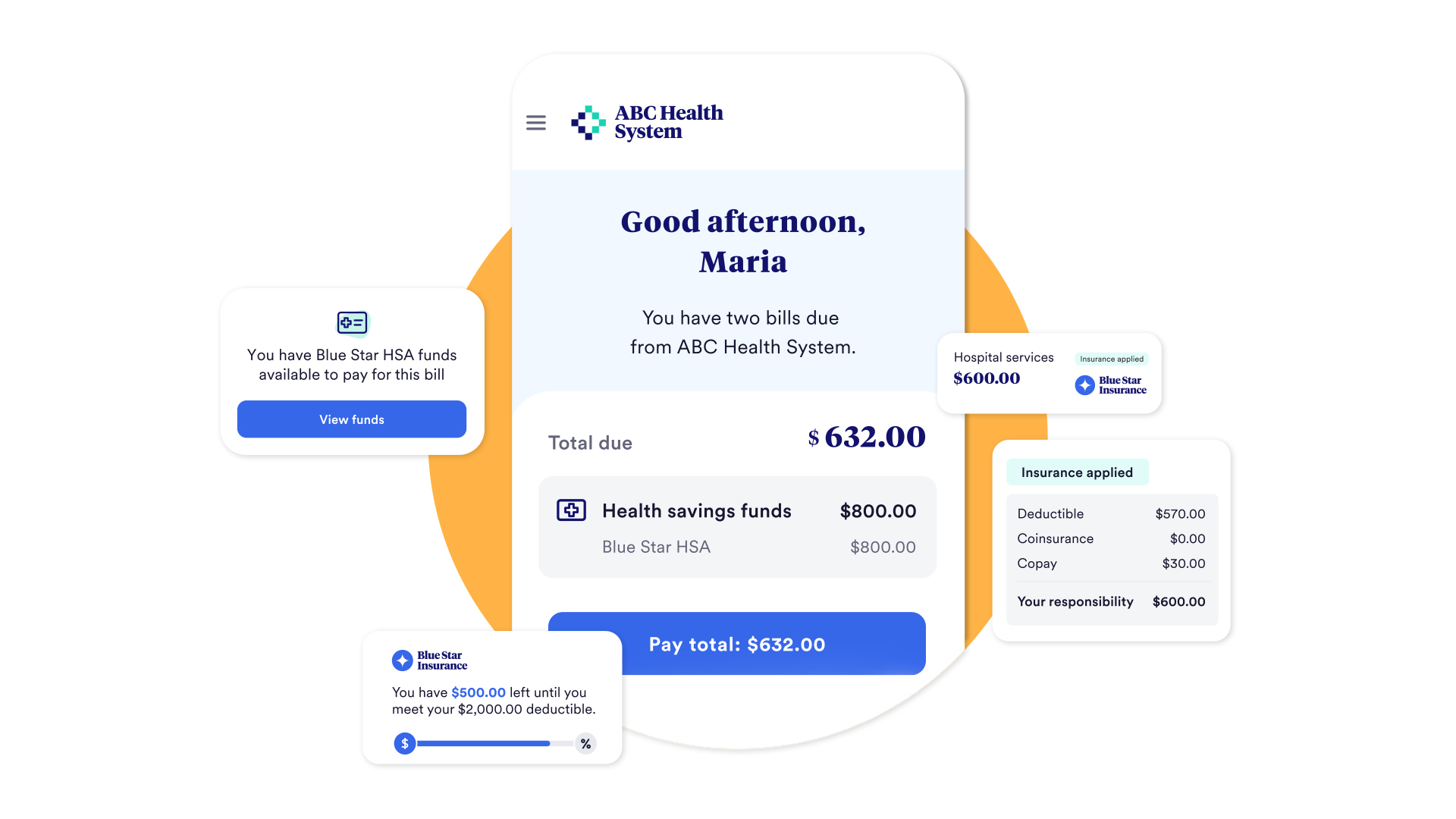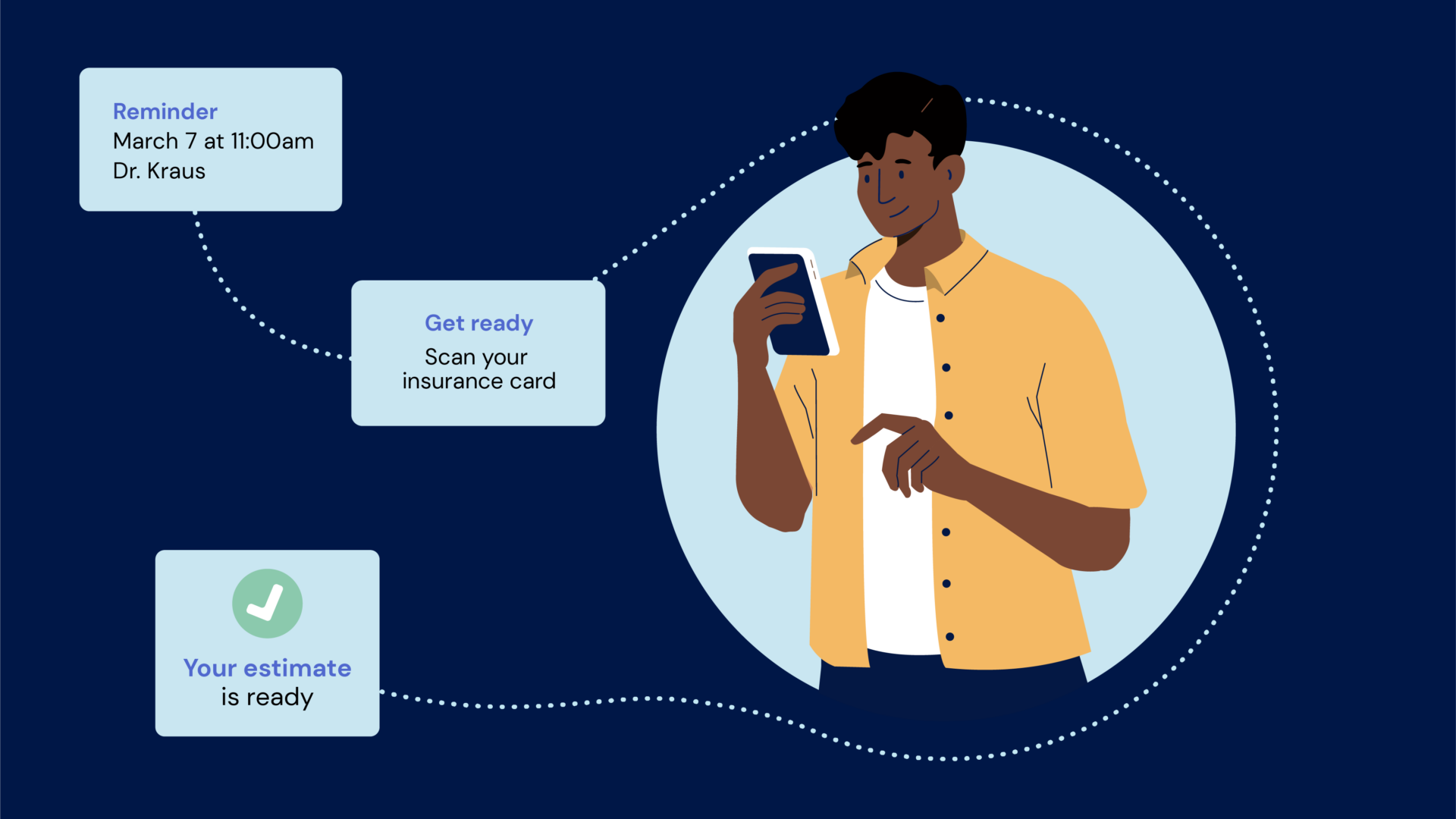Welcome to the latest edition of Cedarians in (Zoom) Cafes Getting Coffee. Let’s check in with Cloud Cray, our lead product architect.
Hi, Cloud! To start, what’s your go-to morning drink?
I have a vast array of K-pods here [for a Keurig coffee maker]. Sometimes I’ll take it black, sometimes with cream in it—just a good, old cup of coffee. But it’s got to be coffee. I can’t get by with tea, energy drinks, soda or just water. I’ve definitely got to have my morning coffee once I get down to work.
How many cups do you have a day?
I don’t think I should disclose that. An unhealthy amount. Too many.
How did you end up working in healthcare tech?
In my senior year of college, I went on my college job board and found a guy looking for someone to do some financial modeling in Excel. He gave me two weeks to get a project done, and that night, I knocked the whole thing out in about an hour.
The next day, he said, “You know, I just started this medical billing company with a few family members, and I spend a lot of my time doing monthly reporting. It would be great if you could come help us with some of this stuff.” The company was called MedDirect, one of the first to focus on the patient portion of medical billing, and really treat it as customer service rather than act as a glorified collections agency. In my first week, I automated their entire monthly reporting system, so they offered me a job as an analyst. It was even before the Affordable Care Act passed, and I had the opportunity to dive deep into the patient billing experience before a lot of other folks.
Eventually I jumped to a startup called Eligible, which does real-time data transmission between insurance companies and doctors, and I ended up being the VP of Product. I left there to launch my own startup, Patient Price, building a price transparency tool that helped patients shop for different services. It solved some cost estimation problems that hadn’t really been addressed.
How did you land at Cedar?
I got to Cedar because of dancing, actually.
Do tell.
I used to be a competitive ballroom dancer. In Boston, I was one of the coaches for Harvard’s ballroom dance team, and one of the students there, who was very active in the startup scene, spread my name around to some of his friends when he found out what I was working on. Around 2018, one of my former dance students introduced me to some folks over at Cedar. Opportunities can happen in the weirdest ways.
I’ve been officially full-time with Cedar since March of 2021. Before that, I freelanced for the company for about a year and a half. As far as health revenue cycle goes, I happen to know a lot about a very niche corner of the market. Luckily, it’s one of those things that hasn’t been solved in the right way yet.
What does an ideal work day look like for you?
I like to mix things up. I love the days when I can grind on code for eight hours straight and other days when I’m really digging into analytics data. Sometimes I love giving presentations about what I’ve learned from my 10+ years in the industry, making it interesting and easy to understand for everyone.
Which aspect of your job excites you most?
Solving really, really hard problems.
When you’re in a spreadsheet or table and see that what you estimated vs. what actually happened is a nice big zero, that’s great. When there’s a really complicated problem with a bunch of moving parts, and I can somehow put them all together to get that zero to show up—exactly where I was expecting it to show up— that’s a really exciting moment. It might be what I like to call a “glass cannon” development, where it does something really well, really strong, but if you flick it the wrong way, the whole thing breaks. Even so, just getting to a point where something really hard is solved, all the way through to the end, is very rewarding.
What do you love about Cedar?
The culture and the spirit of innovation. Being here is a real treat.
You’re involved with our neurodiversity initiative. Can you tell us about that?
We have a very diverse group of people here, and we’re stronger for it. I’ve never been part of a company that even mentioned neurodiversity before. I think a lot of companies think of it as a quota thing—just being able to check off a box. But Cedar has put real effort into understanding how to attract and retain neurodiverse talent, what kind of environment works best for us and understanding that there isn’t a one-size-fits-all approach for certain roles.
I’m one of the ADHD representatives on our neurodiversity working group. It’s nice being able to educate other folks, answer their questions, point them to good resources and explain how we approach problems differently.
Cedar is a great place for someone like me with ADHD who doesn’t necessarily want to have the same day twice in a row. Someone who likes bouncing around a little. It’s very cool to have a company willing to explore that and acknowledge the strengths that come with it.
Finally, what do you like doing outside of work? Are you still involved with ballroom dancing?
I’m retired from ballroom dancing. I got to the Top 10 in the U.S. for amateurs at one point in time, and that was all I needed: seeing the screenshot where I made the rankings.
Beyond that, I do hobby robotics. I do a lot of home automation. I built a water fountain the other day for my COVID hobby, which was birdwatching. Getting locked into a third-floor apartment for a year and a half when COVID first hit, there wasn’t much to do other than some birdwatching. We have some blue jays and cardinals out there right now.
So, yeah, I’ve just been watching a lot of birds, and playing with robots, and my fiancée and I also play video games together sometimes. It’s a lot of fun.
Interested in working for Cedar? We’d love to hear from you. Check out our current job openings here.



